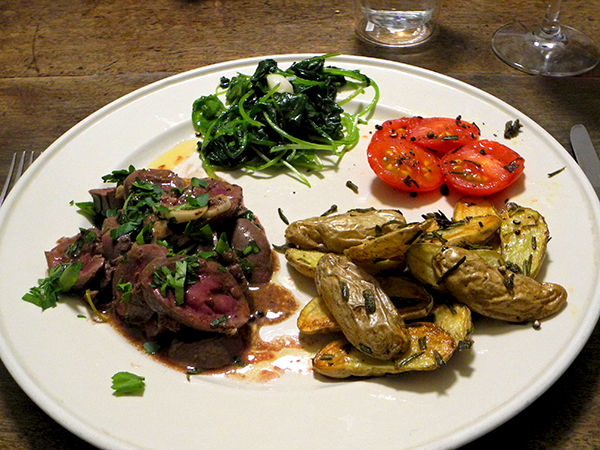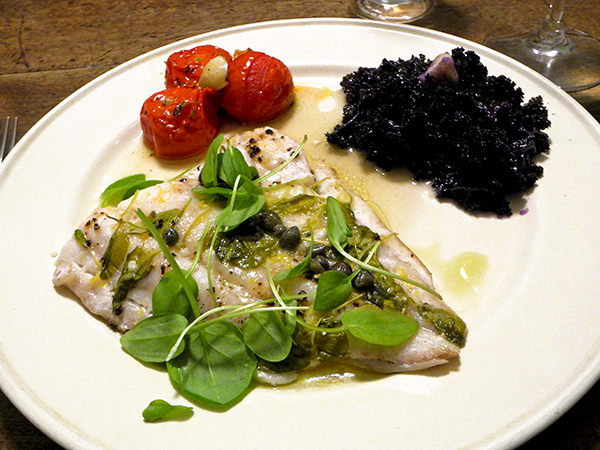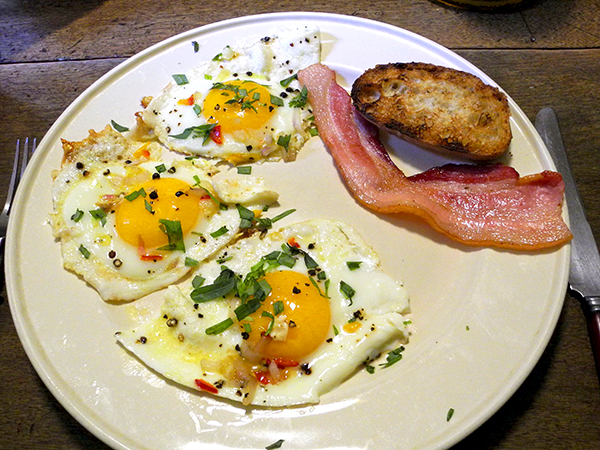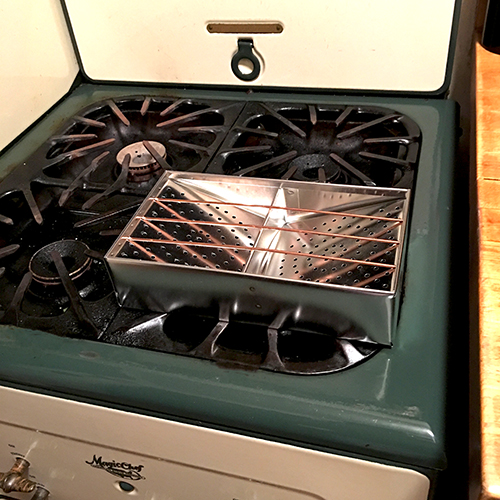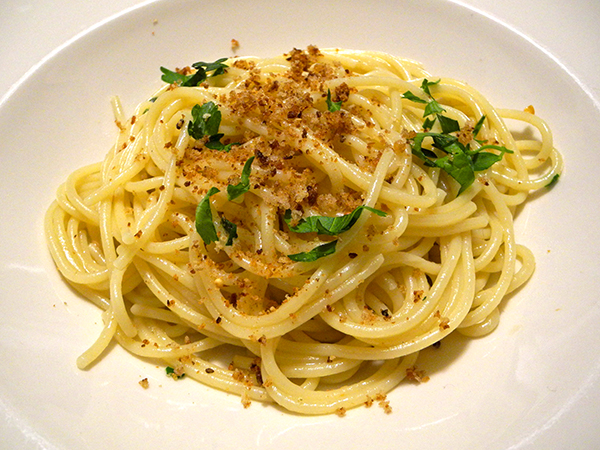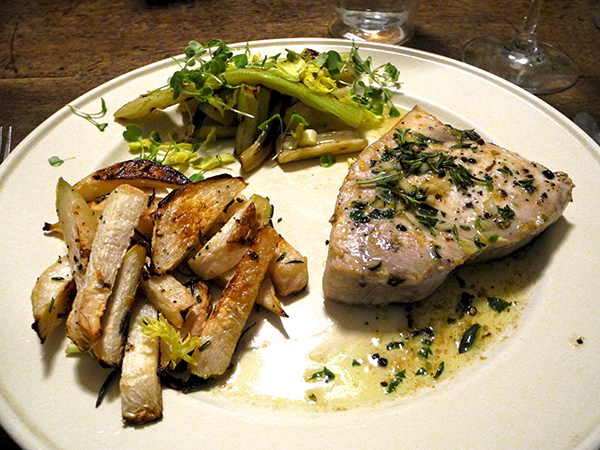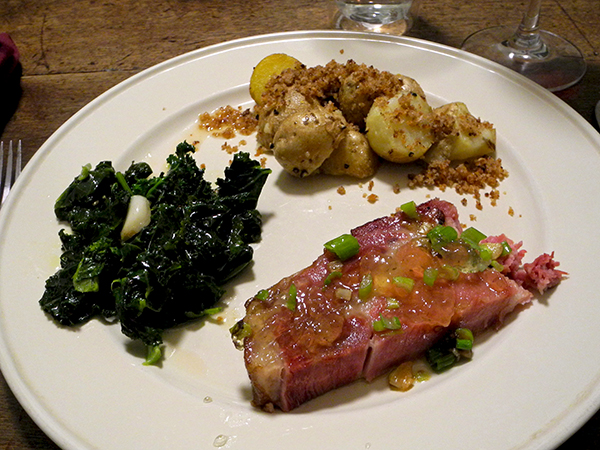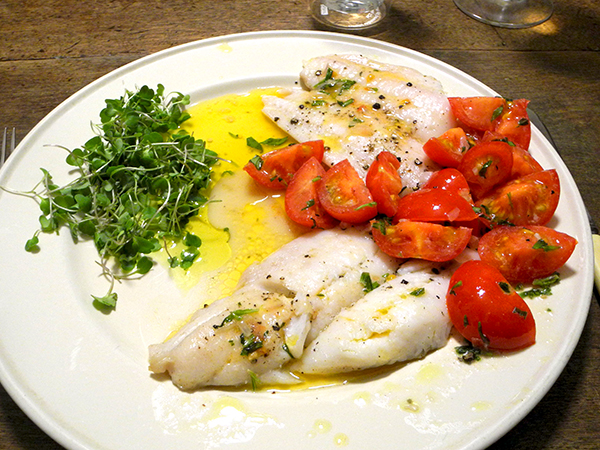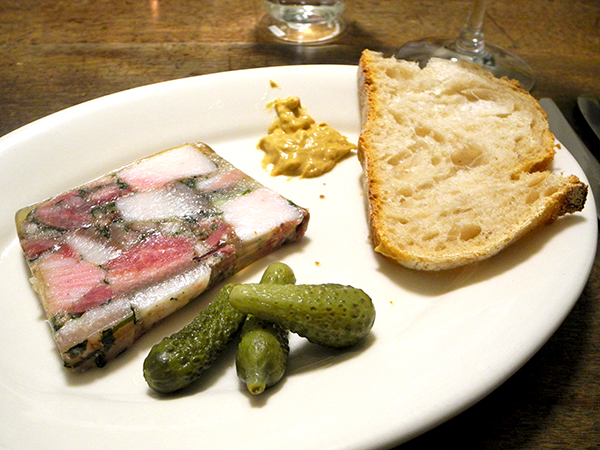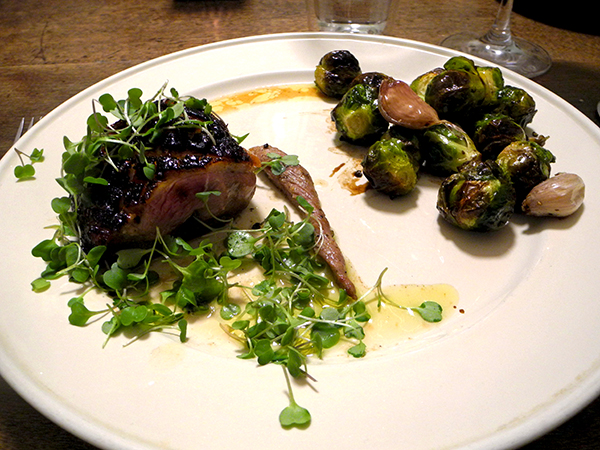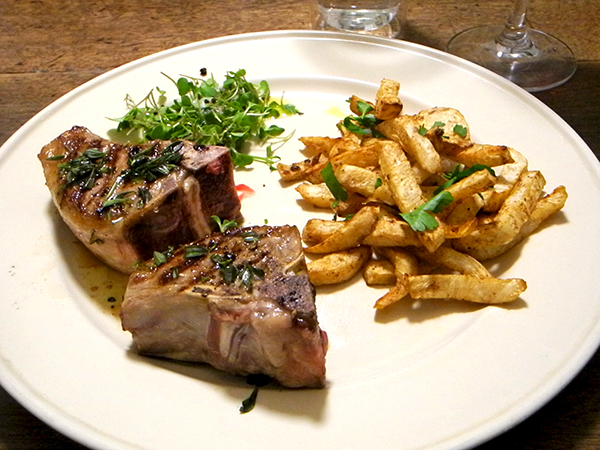maybe my best Rognons de Mouton outing; thinking it was the sorrel
Every so often I think about offal, and then I have to do something about it.
Yeah. Well, this time I started by asking one of the sheep farmers I regularly see at the Union Square Greenmarket whether they had any lamb kidneys. To anyone unfamiliar with this delicacy it might be a surprise to learn that I was actually surprised that the answer was yes. To explain, there appears to be a number of local offal fans who often sweep up any of these and the other types of innards which most people might not even be aware existed. This happens before I manage to get to Union Square; apparently innards people are early risers.
I learned today that there’s even a subgroup whose thing is consuming offal totally raw. Why am I not surprised?
Before I moved to New York in 1985 I traded with traditional butchers who still offered traditional, if not universally popular, fare in the form of kidneys, sweetbreads, tongue, tripe, brains, and of course liver, which is less exotic than most. Oddly, these shops were not located in communities where there were unusually large numbers of recent immigrants, but in middle class mostly-white communities.
I think that since then American middle class white communities may have lost interest in diversity, at least when it comes to animal protein.
I’ve always been interested in what is out of the mainstream, and living with the two volumes of Julia Child recipes for more than a few years, increased my curiosity and also gave me the means to satisfy it. I’ve cooked veal and lamb kidneys, sweetbreads, tripe, veal and lamb tongue, and both veal and lamb liver, but, so fat at least, I’ve skipped brains.
Last night I enjoyed the best lamb kidneys I’ve ever prepared.
The recipe I used was mostly my own invention, a conflation of the Julia Childs recipes which had introduced me to kidneys half a century ago, what I have learned about Italian cooking over the years since I had moved away from Julia, and my imagining how a Mediterranean tradition might prepare kidneys in an age which generally appreciates a simpler cooking style across the board.
Someone please correct me if I;m wrong, but I think I get the Italian right by calling it, ‘rognone di agnello trifolati’ finished with a sauce of garlic, white wine, butter, parsley, and sorrel. Whatever it’s called, it’s delicious.
Note: Do not wash the kidneys before cooking, as they will absorb water, and be very careful not to overcook them or the dish will lose more than its magic.
- four lamb kidneys (8 ounces total) from Catskill Merino Sheep Farm, sautéed in butter (in this case in a tin-lined copper au gratin pan) until brown all over on the outside but still very rare in the center, removed and kept warm while introducing into the pan one large sliced Rocambole garlic clove from from Keith’s Farm, cooking it for one minute, adding white wine and reducing the liquid by half over high heat, quickly slicing the kidneys in the meantime, removing the pan from the burner and slowly swirling into it 2 tablespoons of chilled butter, salt and pepper, returning the sliced kidneys and all of their juices to the pan and briefly warming them in the sauce, sprinkling sauce and kidneys with a combination of chopped parsley from Eataly and some micro sorrel greens from Windfall Farms, then carefully warming the sauce over very low heat for a minute or two
- some quite small La Ratte potatoes from Berried Treasures Farm, halved lengthwise, tossed with oil, chopped rosemary from Stoke’s Farm and sage from Keith’s Farm, seasoned, and roasted on a ceramic pan in the oven
- two Backyard Farms Maine ‘cocktail tomatoes’ from Whole Foods, cut horizontally into four slices, added to the pan with the potatoes a few minutes before they were removed from the onion, seasoned with salt and pepper
- a handful of ‘French Breakfast’ radish greens from Eckerton Hill Farm, wilted in olive oil in which a small garlic clove from Berried Treasures had been allowed to sweat for a bit, then seasoned with salt, pepper and a bit more olive oil
- the wine was a California (Napa Valley) red, Ken Deis Napa Valley Merlot 2014
- the music was Marek Janowski‘s magnificent Dresden ‘Götterdämmerung‘ (so sorry there’s no sequel)
